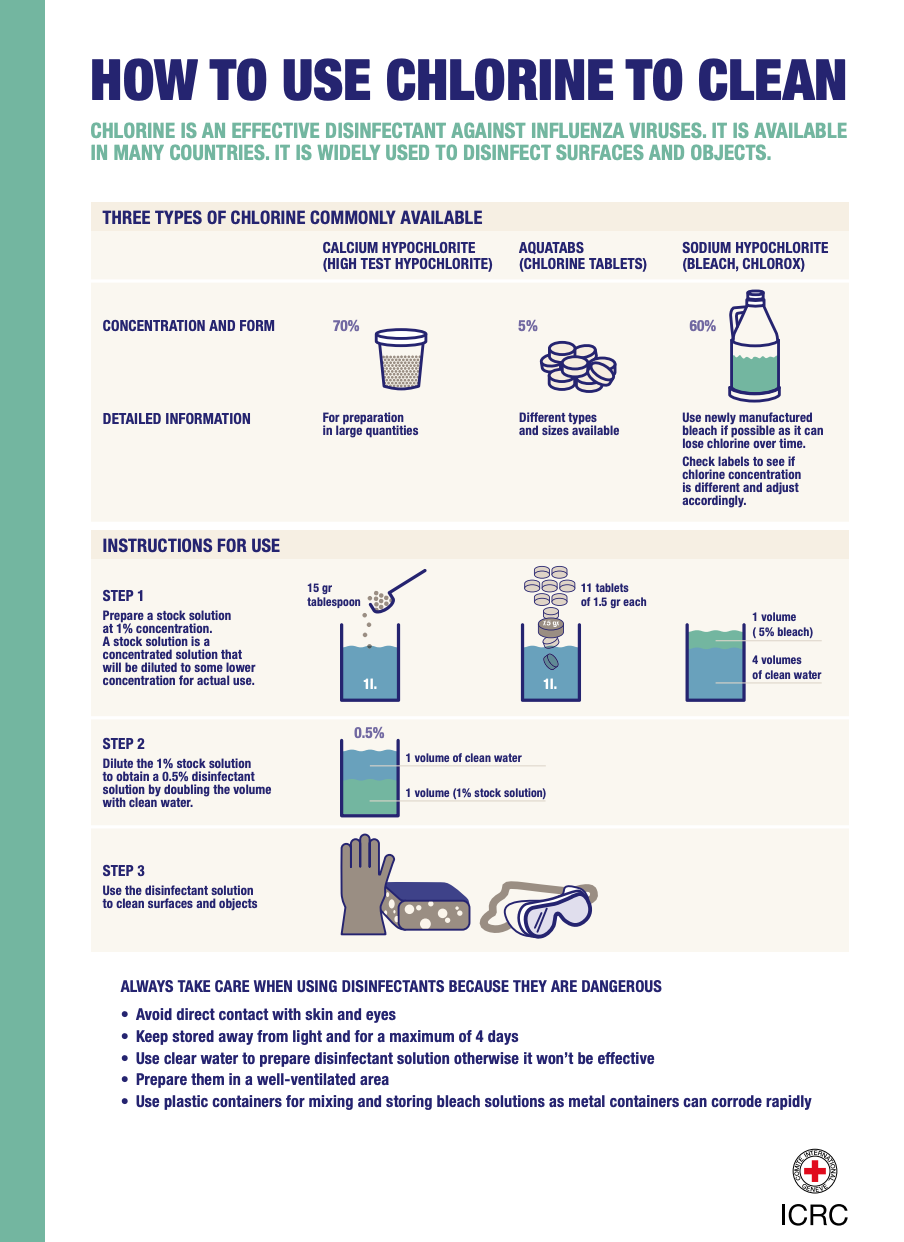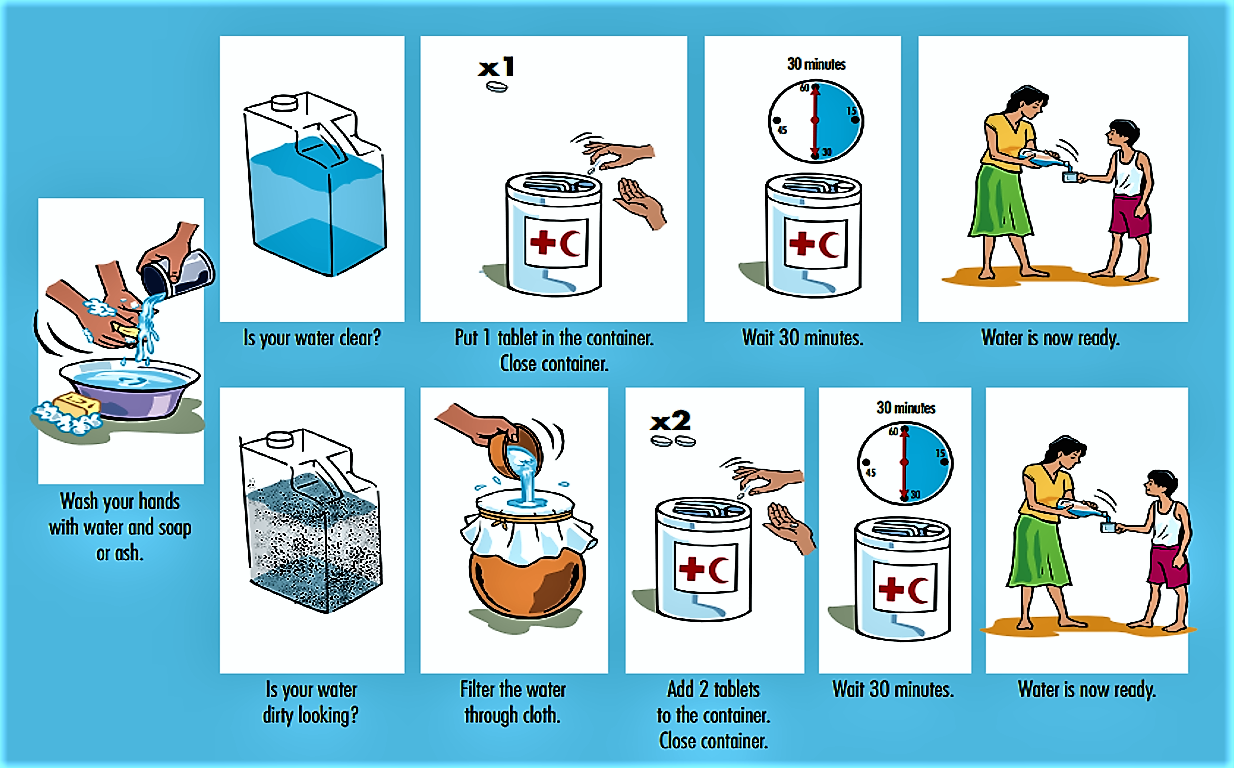In today’s world, access to clean and safe drinking water is a priority. Water is essential for a healthy and safe lifestyle, and it’s important to ensure that the water we use is free of any contaminants or bacteria. Chlorine is a chemical that can be used to disinfect water, and it’s a method that is both affordable and effective. In this article, we’ll discuss how to disinfect water with chlorine, and what you need to do to ensure that your water is safe to use.
Chlorine is a chemical agent that has been used for decades to disinfect water. It kills bacteria, viruses, and other microorganisms that can cause waterborne illnesses and make drinking water unsafe. Chlorine is a cost-effective and reliable way to disinfect water, and it can be used for a variety of different applications. In this article, we’ll discuss the steps that you need to take to disinfect water with chlorine, and the benefits of using this method.
Disinfecting water with chlorine is an effective way to make water safe for drinking. To do so, add liquid chlorine bleach to the water and mix it thoroughly. The amount of chlorine bleach to add depends on the size of the water container and the chlorine concentration of the bleach. For 10 liters of water, add 1 ml of 5-6% chlorine bleach. Allow it to stand for 30 minutes before drinking. If the water has a slight chlorine taste after this treatment, it is safe to drink.
For step-by-step instructions on how to disinfect water with chlorine, follow these steps:
- Measure out the amount of chlorine bleach needed for the volume of water to be treated.
- Add the bleach to the water and mix it thoroughly.
- Allow the mixture to stand for 30 minutes.
- Check for a chlorine taste in the water.
- If the water has a slight chlorine taste, it is safe to drink.

How to Disinfect Water With Chlorine?
Chlorine is one of the most common and effective methods for disinfecting water. It is widely used in both public and private water systems to kill bacteria and other contaminants. This article will explain the process of disinfecting water with chlorine, from the types of chlorine used to the recommended concentrations.
Types of Chlorine
Chlorine can come in several forms, including liquid, tablet, and granular. Liquid chlorine is the most common form used to disinfect water, as it is more effective in killing bacteria than the other forms. Tablets and granules are less effective but can still be used in certain circumstances.
The type of chlorine used will depend on the water source being treated. For example, liquid chlorine is generally more effective in treating lake water than tablet or granular chlorine. It is important to select the right type of chlorine for the water source being treated.
Recommended Concentrations
The amount of chlorine added to the water will depend on the water source and the desired level of disinfection. Generally, the recommended concentration for most public water systems is 0.5 to 1.5 parts per million (ppm). However, some water sources may require higher concentrations of chlorine.
When adding chlorine to water, it is important to measure the concentration of the chlorine carefully. Too little chlorine can be ineffective in killing bacteria, while too much chlorine can be harmful to humans and animals. It is important to follow the manufacturer’s instructions when adding chlorine to water.
Safety Considerations
Chlorine is a hazardous chemical, and should be handled with caution. It is important to wear protective clothing and eyewear when handling chlorine. Chlorine should also be stored in a cool, dry place, away from any ignition sources.
When adding chlorine to water, it is important to ensure that the area is well ventilated. Chlorine can be hazardous to breathe in large quantities, so it is important to ensure that the area is well ventilated.
It is also important to ensure that the water is thoroughly mixed with the chlorine before use. If the water is not mixed properly with the chlorine, it can be ineffective in disinfecting the water.
Disinfection Time
The amount of time required for the chlorine to disinfect the water will depend on the water source and the type of chlorine being used. Generally, it will take between 1 and 4 hours for the chlorine to disinfect the water.
After the water has been disinfected, it is important to wait at least 24 hours before consuming the water. This will allow any remaining chlorine to dissipate and make the water safe to drink.
Testing for Chlorine
It is important to test the water for chlorine after it has been disinfected. Chlorine test strips can be used to measure the concentration of chlorine in the water. The strips will change color to indicate the amount of chlorine present in the water.
It is also important to test the water periodically after it has been disinfected, to ensure that the chlorine concentration remains at the desired level. If the chlorine concentration drops too low, the water may not be safe to drink and will need to be re-treated with chlorine.
Frequently Asked Questions
Chlorine is a powerful disinfectant that can be used to make water safe to drink. But how do you disinfect water with chlorine correctly? Read on to find out the answers to your questions.
How much chlorine should I use to disinfect water?
The amount of chlorine needed to disinfect water varies depending on the source of the water and how clean or contaminated it is. Generally speaking, it’s best to use a small amount of chlorine to start, then adjust the amount depending on the results. The Environmental Protection Agency recommends adding 1/8 teaspoon of chlorine per gallon of water to begin with. If the water is still contaminated after allowing it to sit for 30 minutes, add an additional 1/8 teaspoon of chlorine per gallon and wait another 30 minutes before testing it for contaminants again.
How long does it take for chlorine to disinfect water?
Chlorine takes time to disinfect water. The time it takes for chlorine to do its job will depend on the temperature of the water and the amount of chlorine used. In general, it can take anywhere from 15 minutes to several hours for the chlorine to fully disinfect the water. It’s best to err on the side of caution and wait at least 30 minutes before testing the water for contaminants.
How do I know if my water is safe to drink after adding chlorine?
The best way to know if your water is safe to drink after adding chlorine is to test it for contaminants. You can purchase a water test kit from a hardware store or online. Follow the instructions that come with the kit and compare the results to the recommended levels of contamination. If the water tests clean, it’s safe to drink.
Is it safe to use bleach to disinfect water?
Bleach can be used to disinfect water, but it’s important to use the right kind of bleach. Use only regular household bleach that is 5-6% sodium hypochlorite. Do not use scented, color-safe, or bleaches with additives. Follow the instructions on the bottle for the correct amount of bleach to use and allow the water to sit for at least 30 minutes before testing it for contaminants.
What do I do if my water is still contaminated after adding chlorine?
If your water is still contaminated after adding chlorine, you may need to add more chlorine or try another method of disinfection. Boiling the water is a safe and effective way to kill off any remaining contaminants. Boiling the water for at least one minute should be enough to make it safe to drink. You can also try filtering the water with a cloth, coffee filter, or special water filter.

Water disinfection with chlorine
In conclusion, disinfecting your water with chlorine is a great way to ensure that your water is safe for drinking and other uses. By following the steps outlined above, you can easily disinfect water with chlorine and enjoy the peace of mind that comes with knowing that your water is free from bacteria and other contaminants. Chlorine is a cheap, effective, and widely available disinfectant that can be used in any situation to ensure that your water is safe for drinking and other uses. With the right knowledge and supplies, you can easily disinfect your water with chlorine and know that you are doing your part to keep yourself and your loved ones safe.
